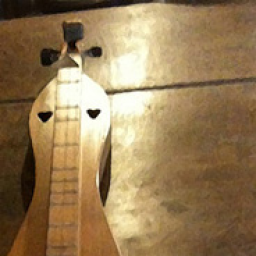Tuning question...
General mountain dulcimer or music discussions
Hi @kb9jlo.
If you simply "want to strum and sing" then your question is not so much about tuning as it is determining what chords to play. Because the dulcimer is a diatonic instrument, every tuning will have some limitations in the sense that some chords may not be possible. For example, in either a DAA or DAd tuning, you will never be able to play an F chord since there is no F natural on the fretboard.
First, I would suggest finding a chord chart. On the Tablature page at Everything Dulcimer , you can find chord charts for DAA and DAd tunings. In whichever tuning you choose, I would start out learning the positions for the main major chords in the key of D: D, G, and A, as well as their relative minors: Bm, Em, and F#m. You will be able to accompany yourself singing most songs in the key of D with those chords.
Second, find the chords for a particular song you want to learn. There is tons of this stuff online because so many of us strum guitars. If you just Google "Frosty the Snowman chords" you will find several examples, including this one . But notice that the chords in that arrangement are not in the key of D; they are in the key of C. You might get lucky and occasionally find chords in the key of D, but you will want to learn how to transpose from one key to another.
Third, if you can count to 8 and know the alphabet from A to G, then you can transpose. Rather than explain all that here, let me offer you this transposition chart for the most common keys:

To use this chart, find the chord that is indicated on the lyrics sheet and locate the comparable chord in the key you want. For example, when the lyrics sheet for "Frosty" indicates a C, you play a D. When it indicates an F, you play a G. When it indicates an Am, you play a Bm. And so forth.
This system will work so long as you can sing in the key of D. Depending on where the melody lies, that will be possible for some tunes and impossible for others. If the melody is too high or low for you, you will have to find a key that works. When you do, you can use this same chart to find the right chords to play. With a dulcimer in DAd or DAA tuning, you can find the right chords to play for the keys of D, G, and A, but other keys will be harder. That is when your initial question about tuning comes into play. Instead of DAd or DAA, you might tune CGc or CGG. The same chord chart you used before will still work, but when you use the fingering for a D chord, you will be playing a C chord. The transposition chart above will again help you figure that out. Similarly, you could tune EAe or EAA and play in the key of E.
That should be enough to get you started. Tune in next week for a lesson on using the capo!







 But thanks for passing on the news.
But thanks for passing on the news.